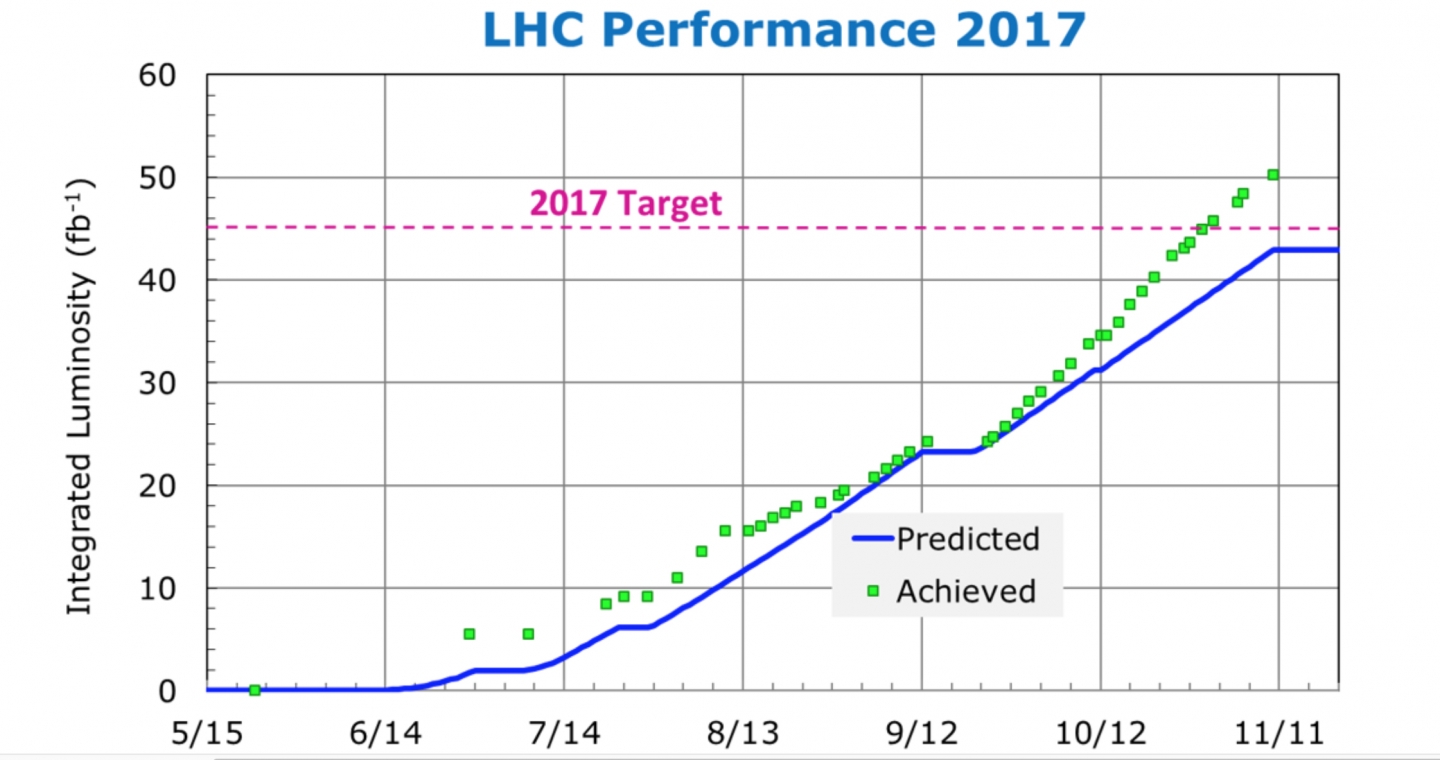
On Friday, 10 November, the final beams of the 2017 proton run circulated in the LHC. The run ended, as it does every year, with a round-up of the luminosity performance. The LHC has far exceeded its target for 2017. It has provided its two major experiments, ATLAS and CMS, with 50 inverse femtobarns of data, i.e. 5 million billion collisions.
This result is all the more remarkable because the machine experts had to overcome a serious setback. A vacuum problem in the beam pipe of a magnet cell limited the number of bunches that could circulate in the machine. Several teams were brought in to find a solution. Notably, the arrangement of the bunches in the beams was changed. After a few weeks, luminosity started to increase again.
At the same time, over the course of the year, the operators have optimised the operating parameters. Using a new system, the Achromatic Telescopic Squeezing (ATS) scheme (see the text below) put in place this year, they have notably reduced the size of the beams when they meet at the centre of the experiments (the more squeezed the beams, the more collisions occur each time they meet). Last year, the operators managed to obtain 40 collisions at each bunch crossing, with each bunch containing 100 billion particles. In 2017, up to 60 collisions were produced at each crossing.
Thanks to these improvements, the instantaneous luminosity record was smashed, reaching 2.06 x 1034 cm-2s-1, twice the nominal value.
The LHC will continue to operate for another three weeks for two special runs and operation studies. The first special run will consist of carrying out proton collisions at 5.02 TeV, the same energy as that planned for next year’s lead-ion runs. This will enable physicists to collect data with protons and set a reference for the comparison with the lead-ion data.
The second special run, at very low luminosity and high beta*, will provide data for the TOTEM and ATLAS/ALFA experiments. The energy will be limited to 450 GeV, i.e. the injection energy into the LHC.
Finally, the operators will carry out a “machine development” campaign. Over a period of one week, they will perform operating tests to improve the accelerator’s performance still further, including tests with the Achromatic Telescopic Squeezing scheme.
The magic of the Achromatic Telescopic Squeezing scheme
At the beginning of the year, it was decided to make significant modifications to the LHC optics in order to make the optics compatible with the Achromatic Telescopic Squeezing (ATS) scheme. This scheme offers innovative and complementary optics manipulations in order to reduce the beta*, which quantifies the beam spot size at the interaction point. This scheme is now accepted as being the most cost-effective and robust way to reach the very challenging beta* target of 10-15 cm for the HL-LHC, which otherwise would be intrinsically limited.
The first challenge that had to be overcome to enable early implementation of the scheme in the LHC was to demonstrate an ATS-compatible version of the LHC optics at the intermediate beta* of 40 cm, as already reached in 2016 (hence intermediate from the HL-LHC perspective but already beyond the LHC’s design value of 55 cm). The second challenge was to commission the scheme’s telescopic techniques, to be deployed later in the year. These techniques contributed to the existing LHC’s record-breaking performances, helping it to achieve a 30‑cm beta*, almost a factor of two below its design value.
